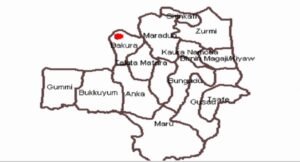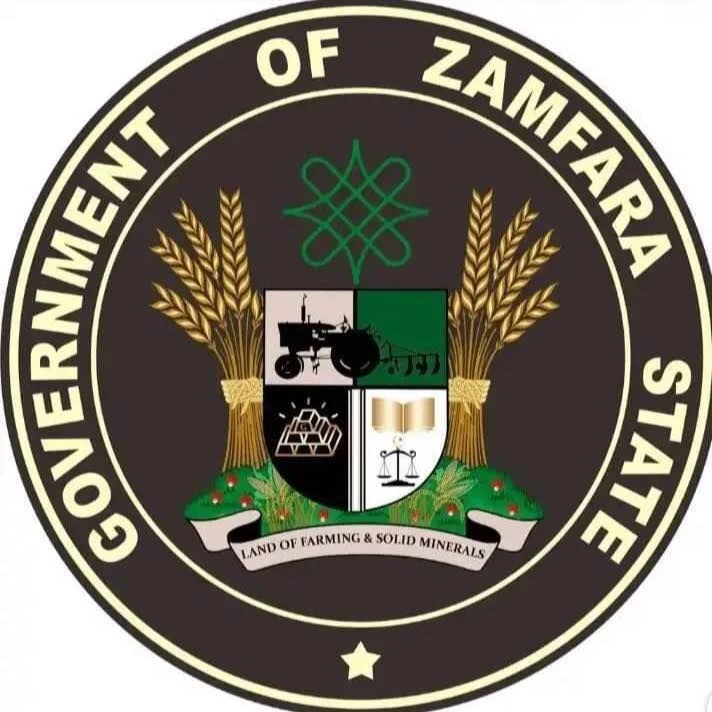This is the complete list of all the 14 Local Government Areas In Zamfara State, Including their headquarters, and chairman:
S/N | LGA | Headquarters | Chairman |
|---|---|---|---|
1 | Anka | Anka | Bashar Musa Anka |
2 | Bakura | Bakura | Sa’idu Danbala |
3 | Birnin Magaji | Birnin Magaji | Abdulhakim Ahmad |
4 | Bukkuyum | Bukkuyum | Abubakar Umar |
5 | Bungudu | Bungudu | Nura Abdullahi |
6 | Gummi | Gummi | Aminu Falale |
7 | Gusau | Gusau | Abubakar Imam |
8 | Kauran Namoda | Kauran Namoda | Manir Haidara |
9 | Maradun | Maradun | Sanusi Ahmed |
10 | Maru | Maru | Bello Jabaka |
11 | Talatan Mafara | Talatan Mafara | Yahayya Yari |
12 | Tsafe | Tsafe | Garba Shehu |
13 | Shinkafi | Shinkafi | Ibrahim Musa |
14 | Zurmi | Zurmi | Samaila Husaini |
READ ALSO: Complete List Of LGA In Sokoto State, Capital, And LGA Chairmen
Map Of Zamfara State LGAs, Nigeria

What Is The Capital Of Zamfara State, Nigeria?
The capital of Zamfara State in Nigeria is Gusau City. Located in northwestern Nigeria, Gusau serves as the administrative center for the state.
It is also known as the Local Government Area (LGA) of Zamfara State. With a land area spanning 3,364 square kilometers (1,299 square miles), Gusau is home to a diverse population.
According to the 2006 census, the city had a population of 383,162, which has grown to an estimated 682,700 as of 2022.
Gusau’s history traces back to the nineteenth-century jihad movement led by Sheikh Usmanu Danfodiyo. Founded around 1799 by Mallam Muhammadu Sambo Dan Ashafa, a disciple of Sheikh Danfodio, Gusau emerged as an essential settlement in the Sokoto Caliphate.
Initially an agrarian society, Gusau flourished as an agricultural and commercial center, attracting agriculturists, farmers, and livestock rearers, especially the Fulani people.
Colonialism brought about important changes to Gusau, introducing modern infrastructure such as roads, railways, and educational institutions.
The city’s economy remained primarily agricultural, with crops cultivated in Damina playing a crucial role. Gusau’s climate is seen as a tropical savanna climate, with the dry season being hot and partially cloudy throughout the year, and the wet season being oppressive and generally cloudy.
Climate change is impacting Gusau, leading to warmer temperatures and altered weather patterns. Today, Gusau is home to a diverse population and serves as a hub for administrative, commercial, and cultural activities in Zamfara State.
READ ALSO: Complete List Of LGA In Akwa Ibom State, Capital, And LGA Chairman
List Of The 14 Local Government Areas In Zamfara State And Their Population
Here’s a list of all the 14 LGAs In Zamfara State, and their population: Gusau is the largest local government area In Zamfara state by population. The population of Gusau is 383,162 In 2006, which has grown to an estimated 682,700 as of 2022.
| No | LGA | 2022 Population Projection |
|---|---|---|
| 1 | Anka | 255,500 |
| 2 | Bakura | 332,900 |
| 3 | Birnin Magaji | 327,500 |
| 4 | Bukkuyum | 384,900 |
| 5 | Bungudu | 460,200 |
| 6 | Gummi | 367,800 |
| 7 | Gusau | 682,700 |
| 8 | Kaura Namoda | 507,700 |
| 9 | Maradun | 369,300 |
| 10 | Maru | 521,500 |
| 11 | Shinkafi | 241,900 |
| 12 | Talata Mafara | 383,700 |
| 13 | Tsafe | 474,900 |
| 14 | Zurmi | 523,000 |
READ ALSO: Complete List Of LGAs In Kogi State, Capital, And LGA Chairmen
Which Local Government Has The Lowest Population In Zamfara State?
Shinkafi Local Government Area has the lowest population in Zamfara State, Nigeria. This area, located in the northern region, contains approximately 674 square kilometers and is home to a populace of 241, 900 individuals, according to the 2022 population projection.
Shinkafi shares its borders with Isa Local Government Area in Sokoto State to the north and the Republic of Niger, Zurmi Local Government Area to the south and southeast, and Maradun and Raba Local Government Areas (Sokoto State) to the west.
Its distance from the state capital, Gusau, is around 116 kilometers. The history of Shinkafi traces back to the early 1800s, preceding the Jihad of Usman Danfodio.
It began with the migration of Mallan Muhammadu Zabo, an Islamic scholar from the Borno Empire, accompanied by a retinue in search of fertile pastures for their livestock.
They settled in a valley near a river, establishing the first settlement, which later expanded into Shinkafi. Over time, the area witnessed an influx of diverse ethnic groups, contributing to its socioeconomic growth.
Presently, Shinkafi thrives as a commercial hub, attracting traders and merchants from within Nigeria and neighboring countries like Niger Republic, Cameroon, Togo, Mali, Benin Republic, Chad, and Ghana.
Its market status, coupled with its agricultural prowess, particularly in rice cultivation, has driven its development. The town boasts essential amenities such as schools, hospitals, clinics, piped water systems, electricity from the national grid, good road networks, banking services, and dining establishments.
Moreover, Shinkafi moved from a district head leadership structure to an emirate in 2000 under the tenure of the first executive governor of Zamfara, Sen. Ahmed Sani (Yariman Bakura).
Since then, it has been governed by successive rulers, with Emir Mohammadu Makwashe currently at the helm. In terms of climate, Shinkafi experiences a distinct wet season indicated by heat and humidity and a dry season marked by hot and windy conditions.
The area’s average temperature fluctuates throughout the year, with April being the hottest month and January the coolest.
Reference Sources:


Allah yabamu nasara